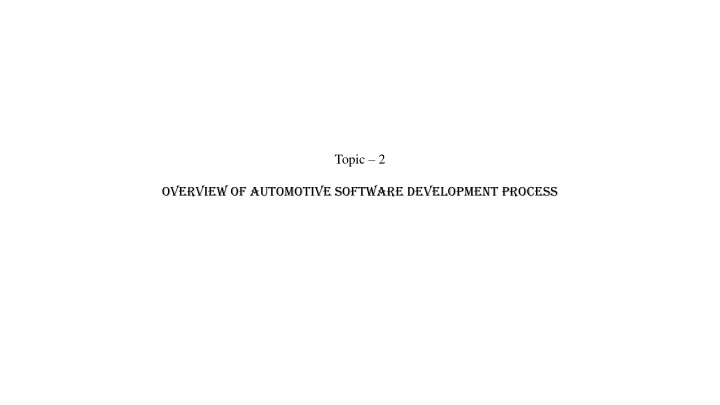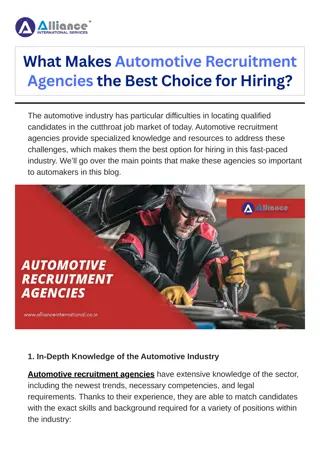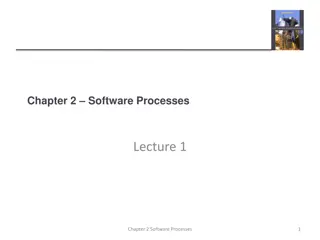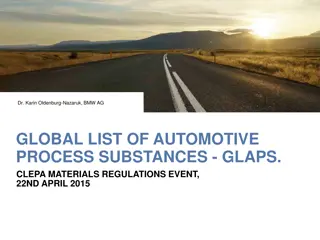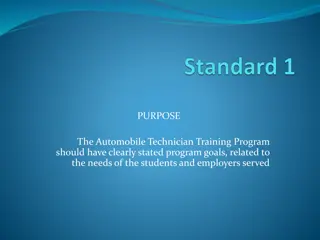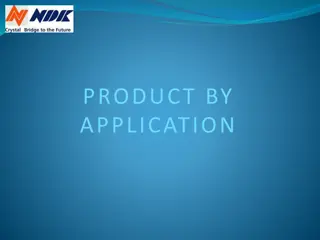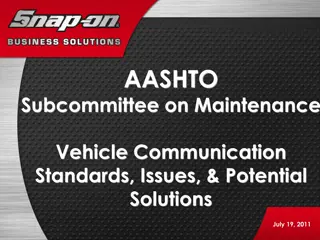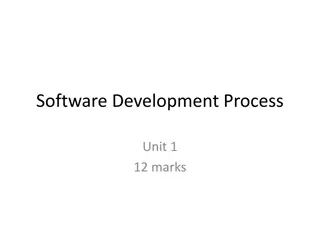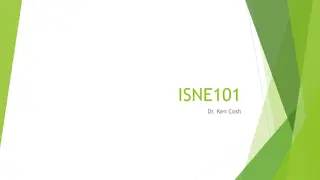Overview of Automotive Software Development Process
The development of software in the automotive industry is essential due to the increasing complexity of vehicles. This process involves requirements gathering, system design, component development, integration testing, validation, calibration, release, and maintenance. Automotive-specific considerations like functional safety and cybersecurity are crucial, with an iterative approach for continuous improvement.
Download Presentation

Please find below an Image/Link to download the presentation.
The content on the website is provided AS IS for your information and personal use only. It may not be sold, licensed, or shared on other websites without obtaining consent from the author.If you encounter any issues during the download, it is possible that the publisher has removed the file from their server.
You are allowed to download the files provided on this website for personal or commercial use, subject to the condition that they are used lawfully. All files are the property of their respective owners.
The content on the website is provided AS IS for your information and personal use only. It may not be sold, licensed, or shared on other websites without obtaining consent from the author.
E N D
Presentation Transcript
Topic 2 Overview of automotive software development process
The development of software in the automotive industry has become increasingly crucial as vehicles become more sophisticated and technologically advanced. Automotive software development involves a structured and iterative process to ensure the efficient creation of reliable and safe software systems. Here is a brief overview of the automotive software development process:
1. Requirements Gathering: The process begins with gathering and documenting the requirements for the software system. This involves understanding the functionalities, performance expectations, safety regulations, and user needs. 2. System Design: In this phase, the software architecture is designed, defining the overall structure, modules, and interfaces of the software system. The design takes into consideration various factors such as safety, reliability, performance, and scalability. 3. Component Development: The software components are developed based on the design specifications. This step involves coding, testing, and integration of individual software modules. The code is written using programming languages suitable for automotive applications, and coding standards and guidelines are followed to ensure quality and maintainability.
4. Integration and Testing: The software components are integrated into a complete system, and thorough testing is conducted. Integration testing verifies the interaction and compatibility between different software modules, while system testing evaluates the overall performance and functionality of the software system. 5. Validation and Verification: This phase involves validating and verifying the software system against the defined requirements and specifications. Validation ensures that the software meets the intended purpose and user needs, while verification involves checking if the software has been developed correctly and according to the design. 6. Calibration and Optimization: Automotive software often requires calibration and optimization to ensure optimal performance and efficiency. This step involves fine-tuning various parameters and algorithms, adjusting software settings, and optimizing resource usage.
7. Release and Maintenance: Once the software system passes all the tests and meets the desired quality standards, it is released for deployment in vehicles. However, the development process doesn't end here. Regular maintenance and updates are necessary to address issues, introduce new features, and keep the software up to date with evolving technologies and customer requirements. 8. Throughout the software development process, automotive-specific considerations such as functional safety (compliance with standards like ISO 26262), cybersecurity, and communication protocols (e.g., CAN, LIN) are taken into account to ensure the software's reliability and security. 9. It is important to note that the software development process in the automotive industry is iterative and may involve multiple cycles of development, testing, and refinement. Continuous improvement and adherence to industry standards are vital to delivering high-quality software systems that meet the demanding requirements of modern vehicles
